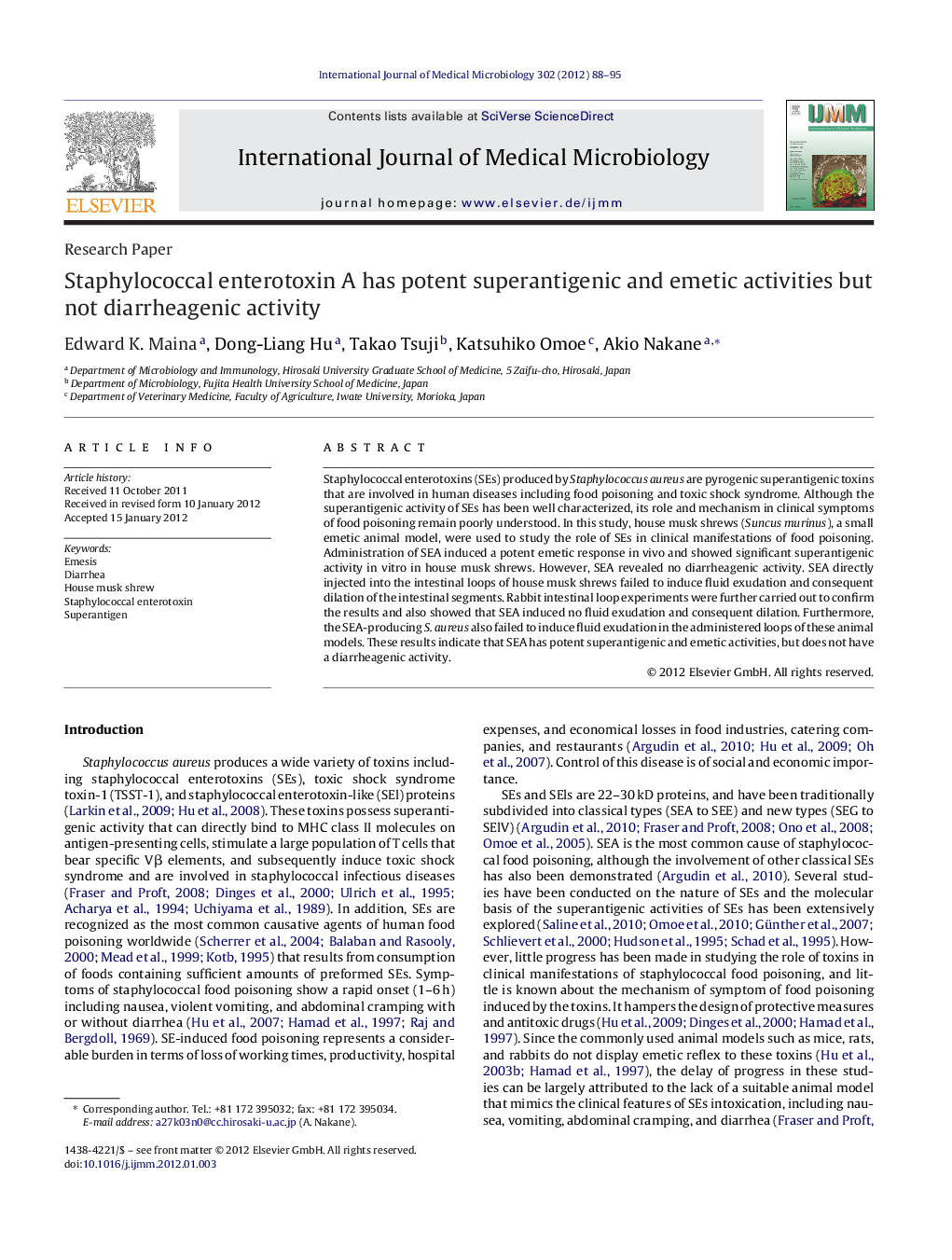| Article ID | Journal | Published Year | Pages | File Type |
|---|---|---|---|---|
| 2054021 | International Journal of Medical Microbiology | 2012 | 8 Pages |
Staphylococcal enterotoxins (SEs) produced by Staphylococcus aureus are pyrogenic superantigenic toxins that are involved in human diseases including food poisoning and toxic shock syndrome. Although the superantigenic activity of SEs has been well characterized, its role and mechanism in clinical symptoms of food poisoning remain poorly understood. In this study, house musk shrews (Suncus murinus), a small emetic animal model, were used to study the role of SEs in clinical manifestations of food poisoning. Administration of SEA induced a potent emetic response in vivo and showed significant superantigenic activity in vitro in house musk shrews. However, SEA revealed no diarrheagenic activity. SEA directly injected into the intestinal loops of house musk shrews failed to induce fluid exudation and consequent dilation of the intestinal segments. Rabbit intestinal loop experiments were further carried out to confirm the results and also showed that SEA induced no fluid exudation and consequent dilation. Furthermore, the SEA-producing S. aureus also failed to induce fluid exudation in the administered loops of these animal models. These results indicate that SEA has potent superantigenic and emetic activities, but does not have a diarrheagenic activity.
